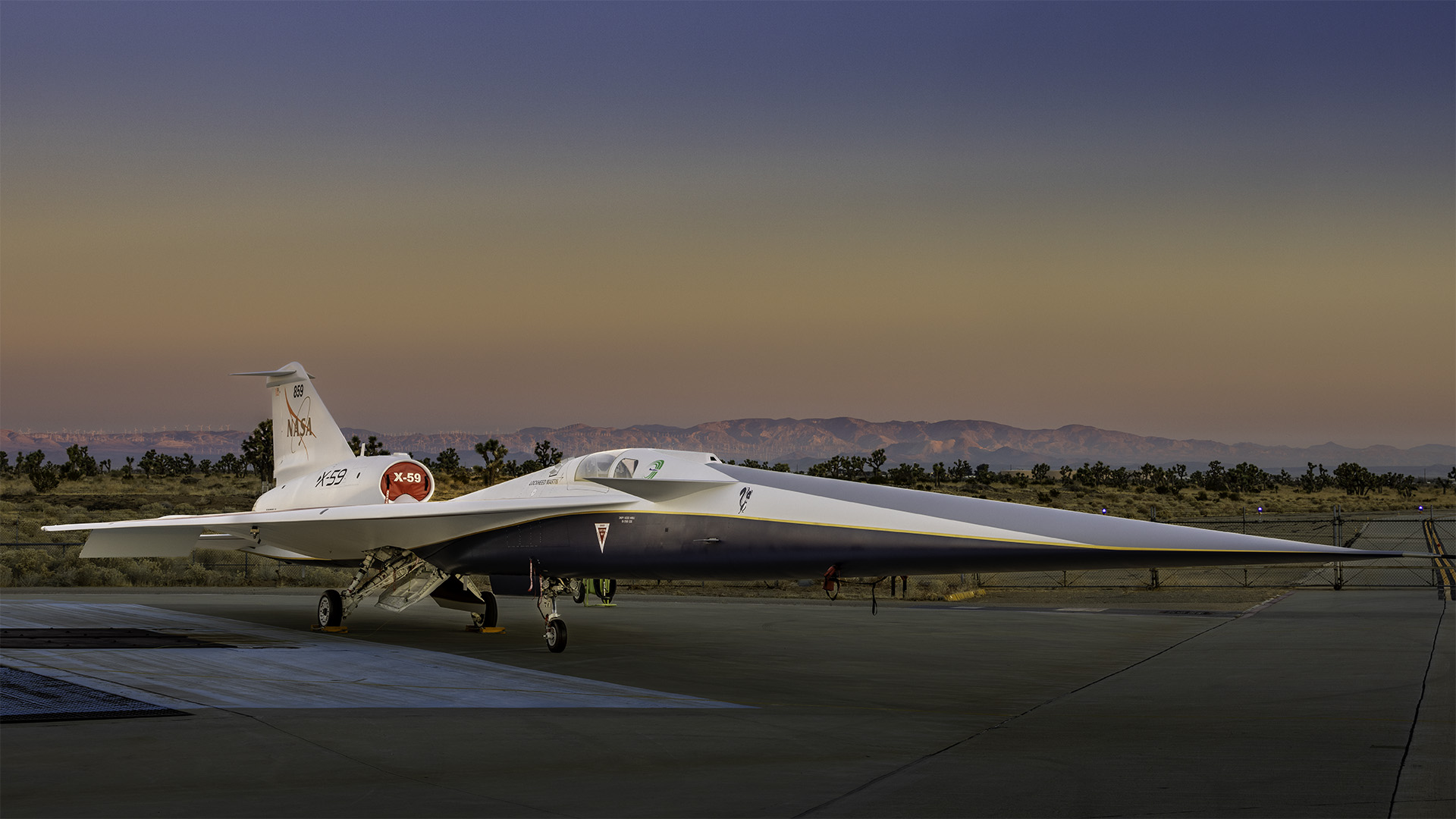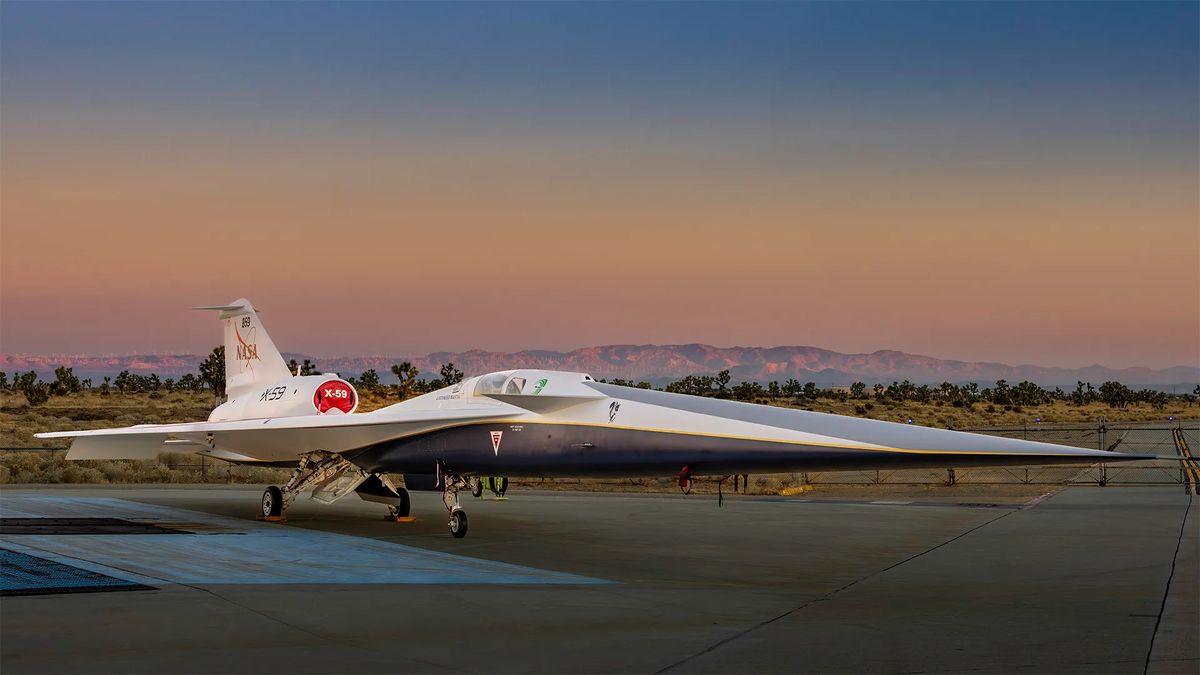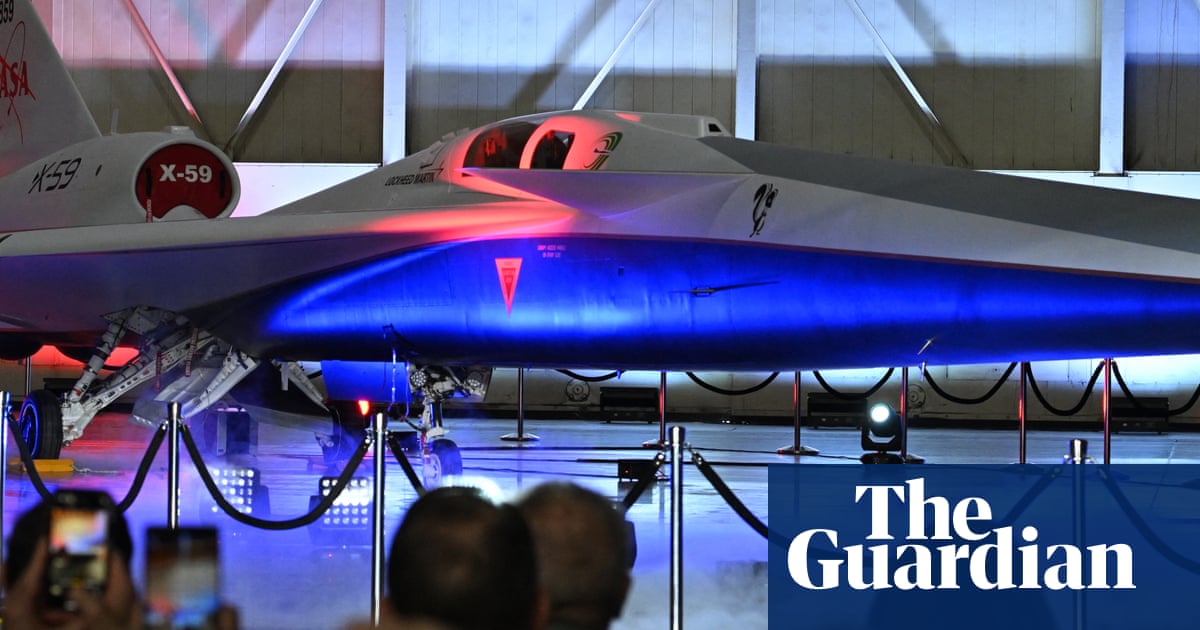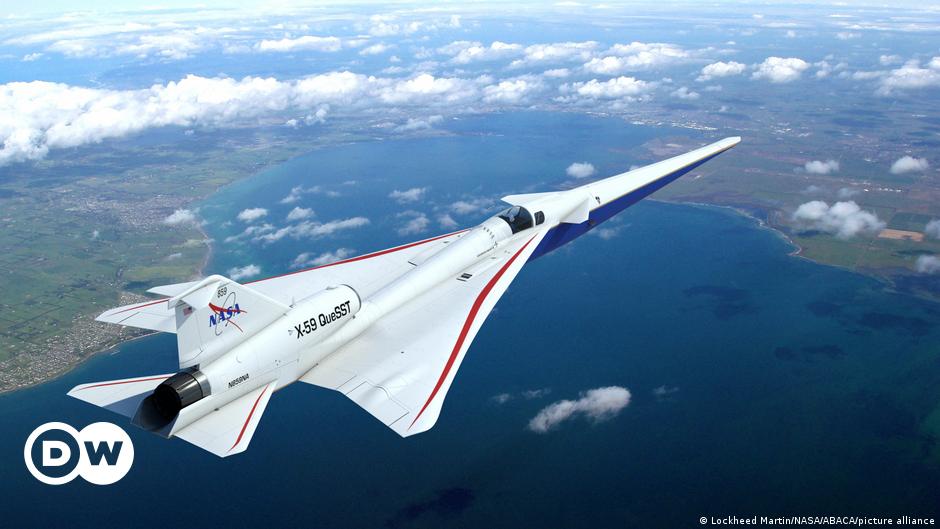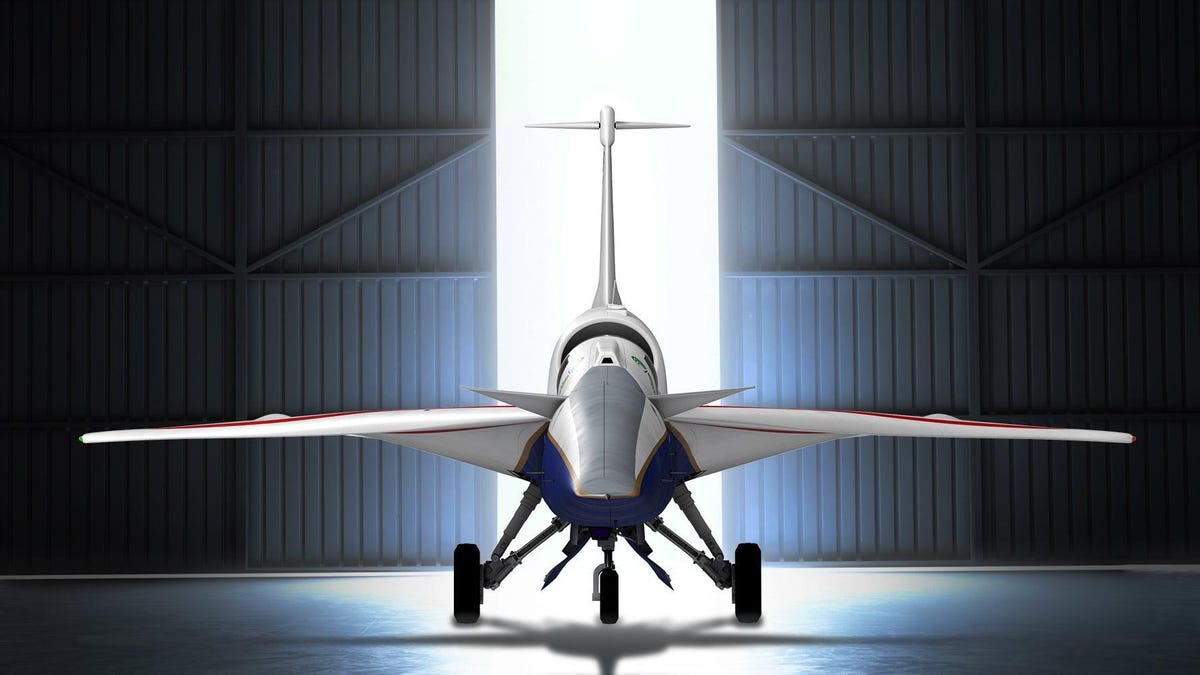NASA and Lockheed Martin have officially revealed the X-59, an experimental aircraft designed to transform the future of air travel. The X-59 is at the core of NASA’s Quesst mission, which is to address the challenge of sonic booms associated with supersonic flight over land.
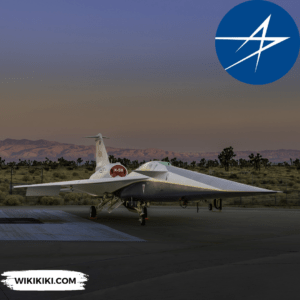
Also Read: China’s Satellite Launch Triggers Emergency Alert in Taiwan
This project seeks to gather data that could revolutionize regulations and pave the way for a new era of commercial aircraft capable of traveling faster than the speed of sound.
The result of years of collaboration between NASA and Lockheed Martin’s Skunk Works, is not just a prototype but a one-of-a-kind experimental airplane.
With a length of 99.7 feet and a width of 29.5 feet, the X-59 has a design focused on achieving quiet supersonic flight.
It is expected to reach speeds of 1.4 times the speed of sound, or 925 mph, while generating a quieter sonic thump.
One of the features of the X-59 is its thin, tapered nose, constituting almost one-third of its length. The cockpit, situated almost halfway down the aircraft’s length, takes an approach by omitting a forward-facing window.
Instead, the Quesst team introduces the eXternal Vision System, a setup involving high-resolution cameras feeding into a 4K monitor within the cockpit.
The X-59 incorporates an engine placement on top and a streamlined underside to prevent shockwaves from merging behind the aircraft and causing disruptive sonic booms. These technological advancements is to make supersonic flight over land not only faster but quieter.
Also Read: Peregrine 1: Vulcan Rocket Launched the First US Moon Lander in Decades
NASA’s Quesst mission, by the X-59, holds the promise of reshaping regulations that have prohibited commercial supersonic flight over land for the past 50 years.
Sonic booms, characterized by loud and startling noise disturbances, have been a primary concern for regulators and communities.
The X-59 is poised to fly at 1.4 times the speed of sound, offering regulators an opportunity to reconsider existing rules.
Bob Pearce, NASA’s associate administrator for aeronautics research, addresses the mission’s benefits, stating, “NASA will share the data and technology we generate from this one-of-a-kind mission with regulators and with industry.”
By demonstrating the feasibility of quiet commercial supersonic travel over land, the project is to open new markets for U.S. companies and global travel experiences.
Also Read: China Reveals Fujian the Next-Gen Aircraft Carrier
The Quesst team is gearing up for the next phases of testing, including integrated systems testing, engine runs, and taxi testing for the X-59.
The aircraft is scheduled to take its first flight later this year, followed by its inaugural quiet supersonic flight.
Flight tests will be conducted at Lockheed Martin’s Skunk Works before transferring the X-59 to NASA’s Armstrong Flight Research Center in Edwards, California, which will serve as its base of operations.
Once flight tests are completed, the X-59 will fly over selected cities across the U.S., collecting data about the sound it generates and how people perceive it.
This data will be shared with regulatory bodies such as the Federal Aviation Administration and international authorities, contributing to the dialogue about the acceptability of sonic thumps associated with supersonic flight.
NASA will livestream the X-59’s first flight, scheduled for later this year, on platforms such as YouTube, the NASA app, and NASA+.
Also Read: SpaceX’s Starlink Launches Cell Phone Service Satellites

